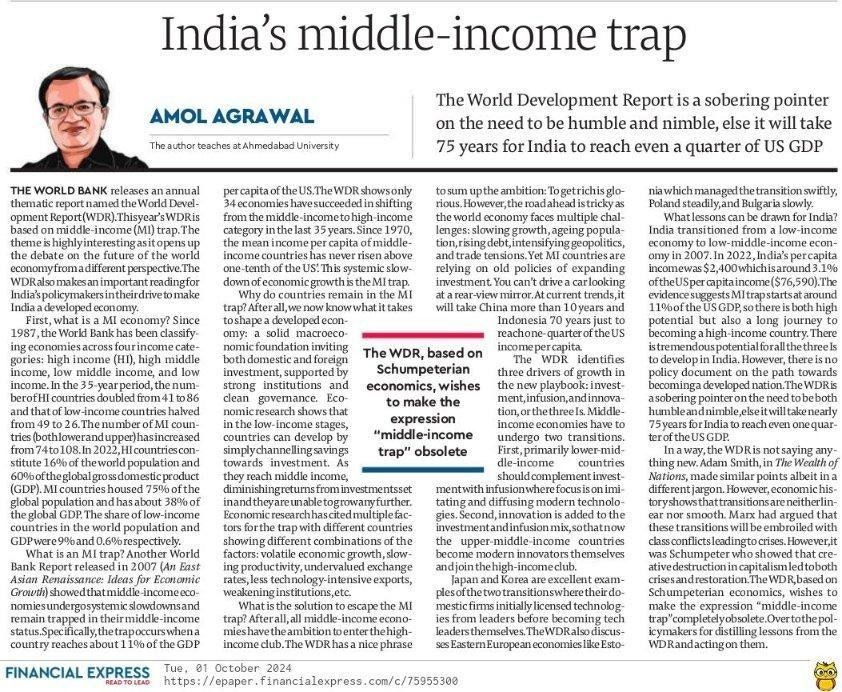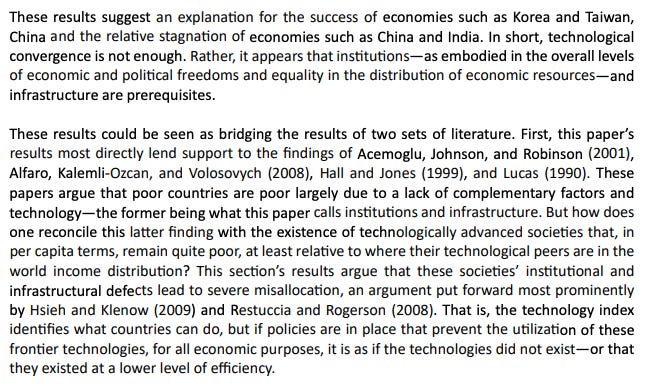One I To Rule 'Em All!
Amol Agrawal has a typically excellent piece out in the Financial Express, and as always it is worth reading in full:
I will not get into the details and definitions here, Amol's post does that already. But very briefly, India has a challenge on her hands - our growth policies over the last three decades (post-1991) have gotten us so far. The question for now is this:
What policies will help us grow more rapidly than what we have achieved thus far?
The trouble is that most countries who have reached a somewhat similar stage of growth (roughly speaking, about a tenth of US GDP per capita levels) have struggled to grow significantly from here on in. That, in a nutshell, is the "middle-income trap".
So what can we do about it?
Amol does a masterful job of summarizing the World Development Report - so masterful, in fact, that he summarizes two WDR's. And the tl;dr is that we need three things. Three "I's" in fact:
Investment | Infusion | Innovation
Investment is obvious, but what is infusion and innovation?
Infusion is about imitating and diffusing modern technologies. That could be something as simple as keeping the shop floor clean (check Appendix A.1 in this PDF if you don't believe me), but more of this needs to happen. Learning from best practices the world over is imitation. Helping spread the word to all forms is diffusion.
Innovation is (among other things) improving upon what we have learnt from others.
And the contention of the WDR is that it is these three "I's" that will change the world.
I have two comments.
First, saying that we need more infusion and innovation is all well and good, but what is really needed is a clear answer to the all important question: how?
How do we get more infusion and innovation going on the ground in India? Here's the abstract of the PDF I linked to earlier:
"A long-standing question is whether differences in management practices across firms can explain differences in productivity, especially in developing countries where these spreads appear particularly large. To investigate this, we ran a management field experiment on large Indian textile firms. We provided free consulting on management practices to randomly chosen treatment plants and compared their performance to a set of control plants. We find that adopting these management practices raised productivity by 17% in the first year through improved quality and efficiency and reduced inventory, and within three years led to the opening of more production plants. Why had the firms not adopted these profitable practices previously? Our results suggest that informational barriers were the primary factor explaining this lack of adoption. Also, because reallocation across firms appeared to be constrained
by limits on managerial time, competition had not forced badly managed firms to exit"
In other words, the debate isn't about whether we need innovation and infusion. Instead, the debate needs to be about how each country should go about ensuring that they get a high level of innovation and infusion. Again, I won't belabor the third "I" - investment - because it is such a patently obvious point.
Second, the World Bank commissions, sometimes, papers that are used as background material to prepare the World Development Report. And this year, a third year PhD student at the University of Chicago was asked to prepare one such paper. The title of this paper is "Institutions, Infrastructure, and Technology".
And here are the key paragraphs (for me) from this paper:
Or put another way, here is what I choose to take away from both this specific paper and the WDR:
Investment, infrastructure, infusion, innovation and industrial policy are all well and good - and they really and truly are. But they all count for nothing without the single most important "I" of them all: institutions.
Without quality institutions that are geared towards 1) a crystal clear understanding of what they're optimizing for 2) a good operational strategy to get to that optimization, all of the other I's count for nought.
Which, of course, begs the question of what institutions should be optimizing for, but then again, my speciality is writing short blog posts. And so that trifling little question we shall leave for another day :)
But it is worth repeating: investment, infrastructure, infusion, innovation and industrial policy are all well and good. But more people need to ask and answer the all important question:
How do we get better institutions in place in India, and what should these institutions be optimizing for?
The Tinbergen Rule is underrated in India!



